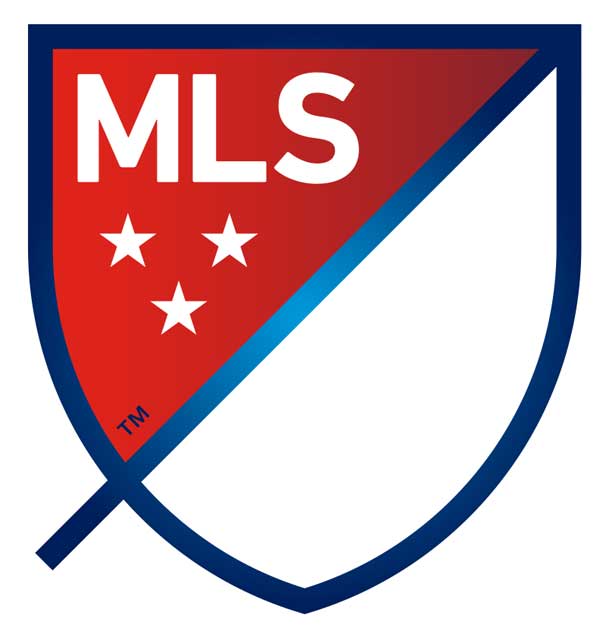MLS IS FINALLY COMING TO AMERICA'S 'SOCCER CITY'
It has been discussed for years but now it is happening.St. Louis, the American city with the deepest soccer heritage, will have a Major League Soccer side starting in 2022.
The 28th professional club franchise in America's top league was announced this week by MLS commissioner Don Garber at a press conference in the midwest city.
"It is with great pride that we welcome St Louis to Major League Soccer." he said. "St Louis is a city with a rich soccer tradition, and it is a market we have considered since the league's inception."
Historically located at the confluence of the Mississippi and Missouri rivers, St Louis has a population of around 300,000 with a metropolitan area of ten times that and is home to internationally recognised brands like Budweiser, Energizer and Monsanto. Until it closed in 2003, TWA was based there too.
But for the quarter century of MLS' existence, the city has been a starkly missing piece of the jigsaw because of its unique history.
For more than any other city in the US, St Louis got the soccer bug in the early 20th century, establishing the nation's first professional league, the St. Louis Soccer League, in 1907 and maintaining thriving youth and amateur leagues after that folded with the outbreak of World War Two.
The first report of football there goes back to 1875, St Louis University dominated American university football for much of the post-war period and five of the USA's 1950 World Cup side who famously beat England 1-0 in Belo Horizonte played for St Louis teams.
More recently, the city has produced US internationals Chris Klein, Steve Ralston, Mike Sorber, Taylor Twellman and current Fulham defender Tim Ream. Brian McBride, another Fulham star, who played for the US at three World Cups and scored at two of them (1998 and 2002) was a St Louis University graduate.
61 St Louis-born footballers have represented the US National Team in all and the city can fairly claim, despite having no MLS team hitherto, to be America's soccer city.
On the eve of the 2006 World Cup in Germany, I had the golden opportunity to speak on the phone from London to Harry Keough, one of the few surviving veterans of 1950 and US captain that day they beat England.
I treasure that couple of hours with a gentle-sounding old man who clearly had a ream of football memories and whose warmth just radiated from so far away. We really could have talked all day but Keough's wife had to remind him he had a children's match to referee so we eventually ended the call.
I asked him why St Louis, alone of American cities, had got the football bug and he told me it was because of the Roman Catholic church organising the children's football leagues. The local RC churches was staffed by many Irishmen, Britons and Germans who had brought their love of football with them from the Old World as St Louis' population mushroomed in the second half of the 19th century.
Visit today and like Boston and Philadelphia, the place still feels very European, with visible cultural legacies of many European food and drink establishments. Although only 64th on the list of most populated American cities, it still has a downtown more vibrant than many of those higher up on the list, another sign of its European ancestry.
So after the Catholic Church sowed the soccer seeds, the children grew up and took on the mantle of establishing association football as the premier sport in higher education in the city, as well as creating a professional league for adults.
What delayed an MLS team in St Louis were the familiar problems of getting a stadium deal in place. Bizarrely from a European perspective, US stadia are usually publicly funded and depend on local voter referenda to be built.
Finally a privately-financed stadium plan for a 22,500-seat arena in central St Louis accessible by light rail was presented and passed the necessary criteria to be accepted by MLS.
For its first decade since its birth in 1996, MLS struggled for credibility with teams attracting paltry crowds in vast NFL bowls. When its two Florida teams folded in 2002 it even looked like the league itself was going to fail like the NASL did in the 1980s.
But a steady move towards soccer-specific stadia of around 20,000 seats improved the match atmosphere and league's credibility, while the arrival of David Beckham in 2007, even he was probably too good for MLS, brought a wow factor to the sport in the USA.
When the Seattle Sounders finished their first season in MLS with an average crowd of over 30,000 in 2009, it was clear things were changing.
Atlanta United, who began in 2017, have blown attendance records to smithereens, averaging over 50,000 per match and regularly topping 70,000 supporters.
In 2019, professional football in America is here to stay. The sport appeals to younger, more globalized generations.
MLS will soon have 30 teams and St Louis at long last will be one of them.
(c) Sean O'Conor & Soccerphile
